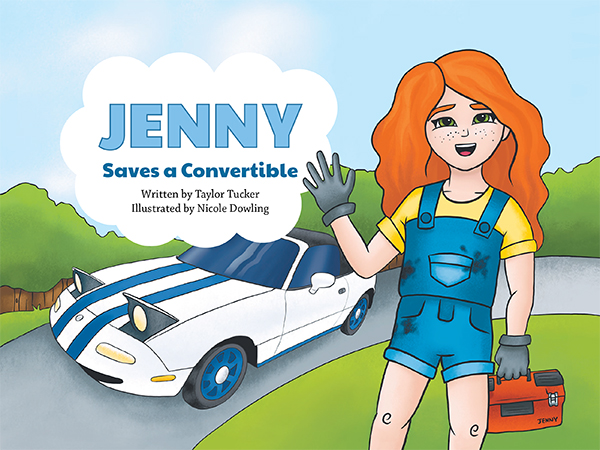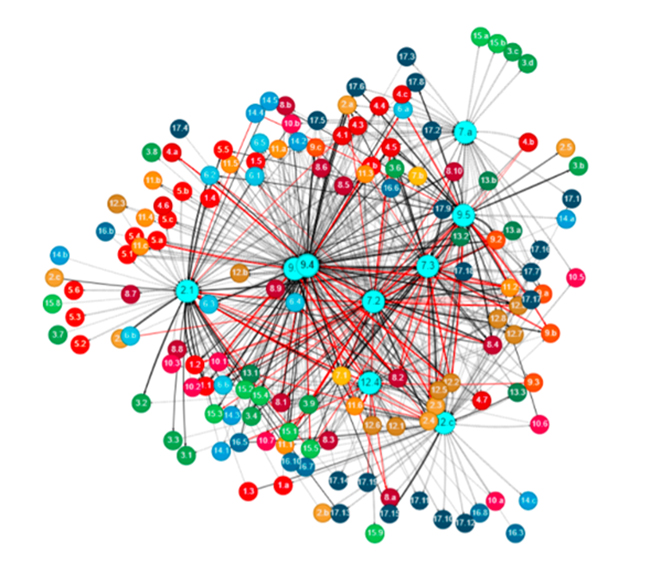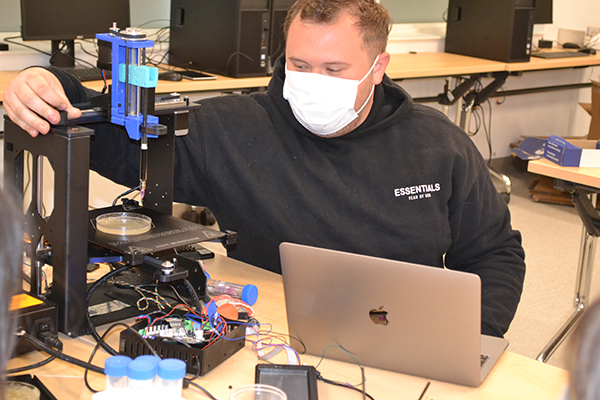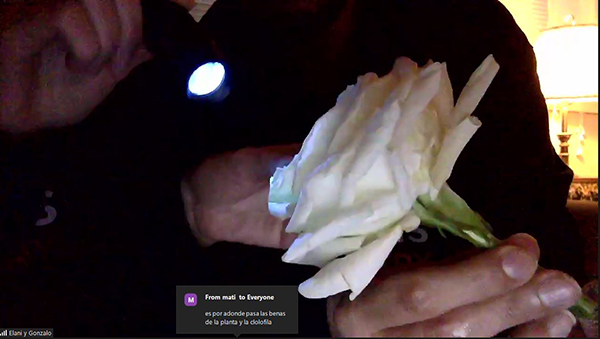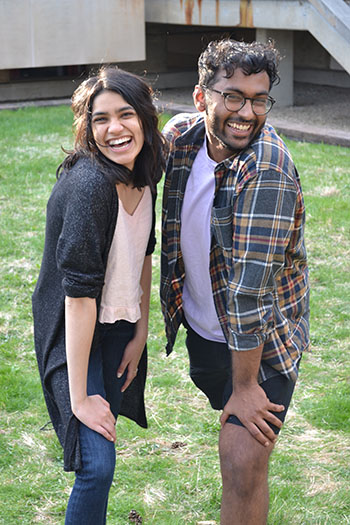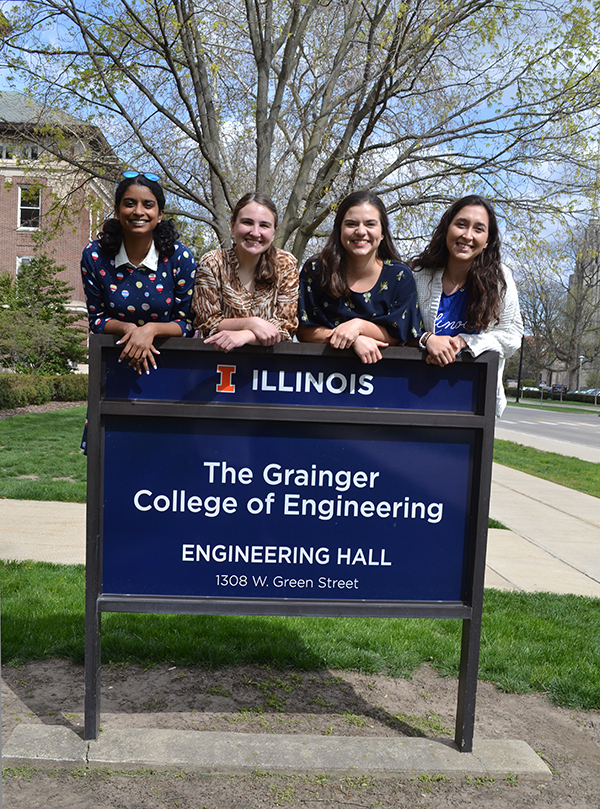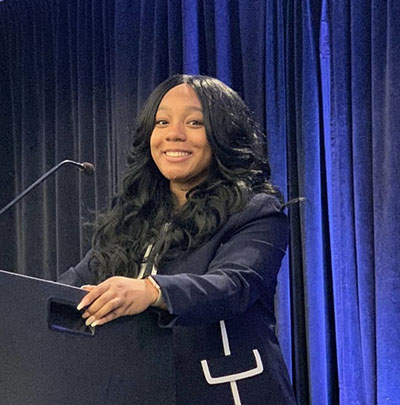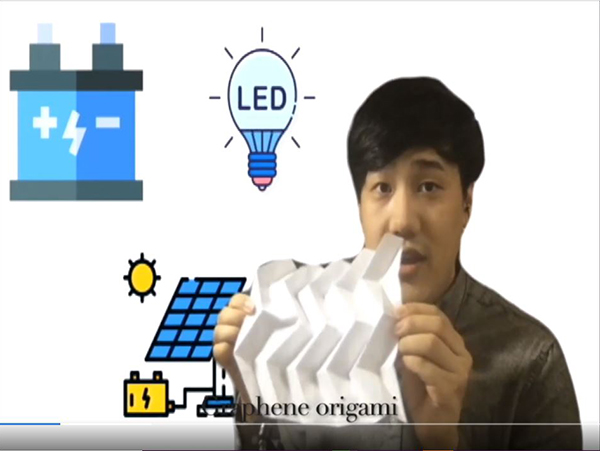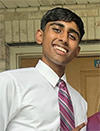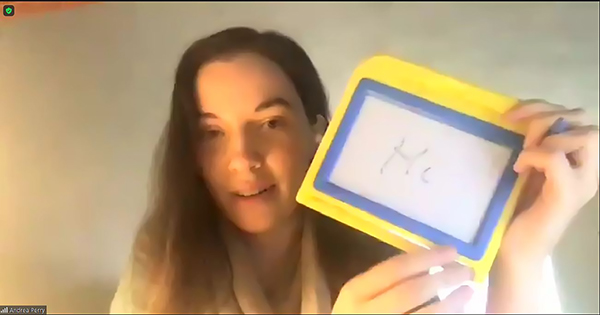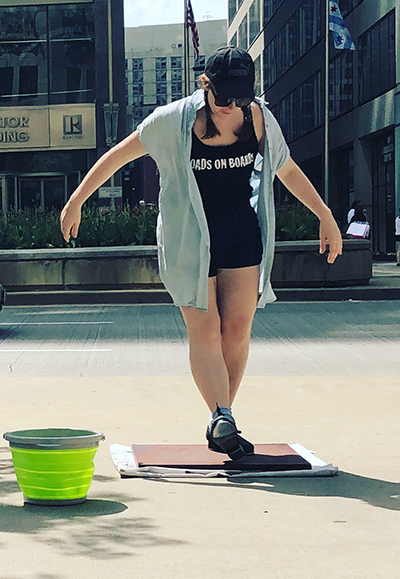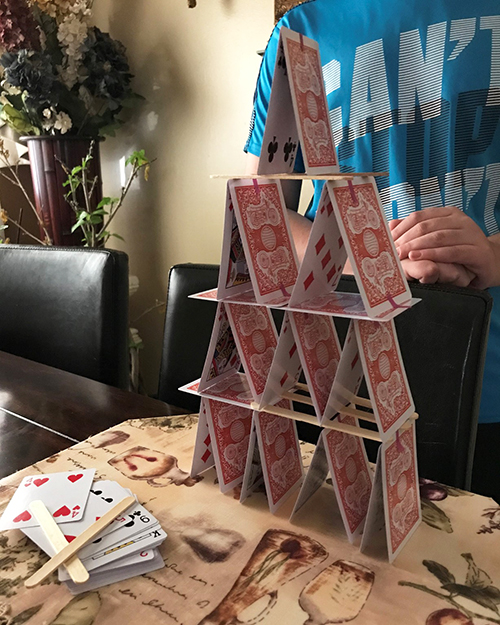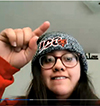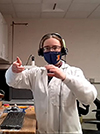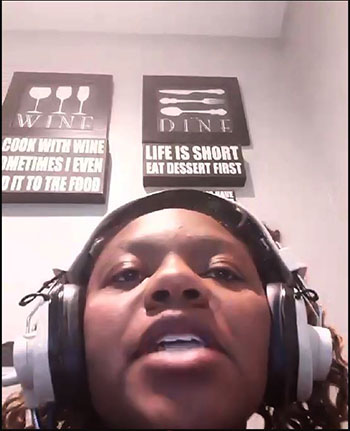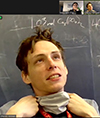Stories about...Faculty/Staff Features
 Liebenberg Espouses Mini-Projects to Engage Students Emotionally, Improve Learning in Engineering
Liebenberg Espouses Mini-Projects to Engage Students Emotionally, Improve Learning in Engineering
May 17, 2021
Mechanical Science and Engineering’s (MechSE) Professor Leon Liebenberg is a proponent of project-based learning—a student-centered pedagogy that suggests students learn better when they have the autonomy to actively explore real-world challenges and problems. So, in two of his lecture courses, ME 200 (Thermodynamics) and ME 400 (Energy Conversion Systems), a key component of both is mini-projects and E-portfolios. Why? He says they engage students emotionally. He goes on to explain the advantages doing so.
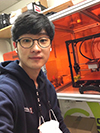 Liebenberg's ME270 Students Repurpose Products for Final Design Project
Liebenberg's ME270 Students Repurpose Products for Final Design Project
December 17, 2020
For students in Leon Liebenberg’s ME 270 (Design for Manufacturability) course, nothing could be more apropos than the old saying, “One man's trash is another man's treasure." For the final mini-project of the semester, the mostly Mechanical Science and Engineering (MechSE) students were to repurpose trash (a discarded product or products) into a product with a non-medical application. So, in an online competition held via Zoom during the final class period on December 8th, the top five projects were presented, after which classmates, the professor and his TAs, and special visitors invited to the session voted for their favorite. The treasure? The top three winners not only received accolades, but students with stellar final projects could contribute significantly to their final grade...and possibly come up with a repurposing design that could somehow make a difference down the road.
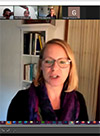 MechSE’s Amy Wagoner Johnson Teaches Grad Students How to Communicate Their Science
MechSE’s Amy Wagoner Johnson Teaches Grad Students How to Communicate Their Science
“Science isn’t finished until it’s communicated. The communication to wider audiences is part of the job of being a scientist, and so how you communicate is absolutely vital.” – Sir Mark Walport
October 12, 2020
The above assertion by Sir Mark Walport, Chief Scientific Advisor to the UK government, is a favorite quote of Mechanical Science and Engineering (MechSE) Professor Amy Jaye Wagoner Johnson's. In fact, it might be considered the philosophy behind her ME598 AWJ Science Communication course. A while back, she decided that one aspect of graduate students’ education that was sadly lacking was communicating their research—both to colleagues, fellow engineers/scientists, and to Joe Blow (or Josephine), the average citizen on the street. So she began to explore science communication, augmenting her own knowledge and skills, then passing them on to her students. Today, the Science Communication aficionado teaches her course to grateful graduate students who count it a crossroads on their journey to more effectively communicating their work.
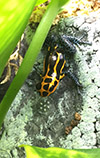 IB Professor Eva Fischer Espouses Frogs—for Both Research and the K–12 Classroom
IB Professor Eva Fischer Espouses Frogs—for Both Research and the K–12 Classroom
“We talk a lot about what we can do at the university level to increase diversity in STEM to reach other populations, etc. But I think if we don't worry about that until kids are 18 and we're at the university level, we've missed the boat. So I just think that we've got to start earlier.” — Eva Fischer
October 7, 2020
There’s a new Integrative Biology professor in town—Eva Fischer—who is sold on frogs. She’s not only setting up a lab in order to research frog behaviors, but she champions their use in the Frogger School Program she’s helped to design for use in K–12 classrooms.
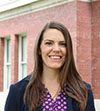 ISE’s Molly Goldstein: Passionate About Teaching Engineering Students Design
ISE’s Molly Goldstein: Passionate About Teaching Engineering Students Design
“My role is…being coach and helping students see what some of their strengths are, and what may be perceived as a weakness, and play into those so that they can play into their strengths. – Molly Hathaway Goldstein
September 30, 2020
Like many of today’s young people, when she was growing up, Molly Goldstein wanted to make a difference. Currently an Industrial and Enterprise Systems Engineering (ISE) Teaching Assistant Professor and Director of the Product Design Lab, Goldstein acknowledges, “I knew that I wanted to be in a career where I was making an impact and helping people. From my first immunization through high school, I thought that was through being a medical doctor.” While she didn’t end up being a doctor, along her journey, she discovered her real passion, and is now poised to make a difference in the lives of numerous engineering students, to help make them the best engineers possible, so they can achieve their own dreams.
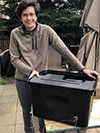 From Trash to Treasure: Liebenberg Uses Design for Repurposing to Spark Student Interest in Online Classes, Possibly Making a Difference in the COVID-19 Pandemic
From Trash to Treasure: Liebenberg Uses Design for Repurposing to Spark Student Interest in Online Classes, Possibly Making a Difference in the COVID-19 Pandemic
May 6, 2020
Can a Coca-Cola bottle be repurposed to make a medical device? What about a plastic bag? How effective are the masks we must now wear when in public? How can masks be reused safely? What are some low-cost solutions for the shortage of ventilators? Leon Liebenberg, a Teaching Associate Professor in Mechanical Science and Engineering (MechSE) was hopeful that students in his ME 270 course might answer some of these questions, even possibly resolve some of the COVID-19-related issues our society is now facing. Liebenberg says, “With everything being turned upside down” (due to the pandemic), he sought a way to help his students more fully engage in online learning. So over spring break, he revamped the final project for his Design for Manufacturability course, making it timely, extremely relevant to the real world, and sure to pique the interest of his students, whom he says are passionate about making a difference. As part of ME270’s “Design-for-Repurposing” final project, students were to design a prototype for emergency medical equipment, such as a ventilator or face mask, using repurposed materials and products..
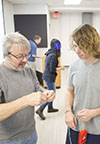 Physics Lab Reform Fosters Independent, Creative Thinking, Builds Student Skills
Physics Lab Reform Fosters Independent, Creative Thinking, Builds Student Skills
“Cause that’s a really big part of this independent, creative thinking, is to have the freedom to choose and to have the trust from your instructors that you are the expert.” – Katie Ansell
April 2, 2020
In fall 2020, the Physics Department is going to roll out reformed laboratory courses that they’ve been piloting over the last several years. But it won’t be business as usual. Instead of having students follow verbatim a long set of very detailed instructions, the idea is that the labs would foster independent, creative thinking, giving students the freedom to explore—and even fail—just like real scientists. Another goal is that the labs will help students develop two kinds of necessary skills: expertise in doing procedures plus “invisible” or involuntary skills—expertise to do something without even thinking about it. And contrary to the instructor-student hierarchy traditionally understood in years past, it’s not the instructor who will be the expert, but the students will be the acknowledged experts of the work they’ll be doing.
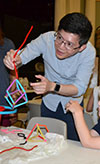 MechSE’s Feng Uses Bubbles to Teach Fluids Principles, Pique Students’ Interest in STEM
MechSE’s Feng Uses Bubbles to Teach Fluids Principles, Pique Students’ Interest in STEM
If good people who know a concept well don't pass that knowledge on to the next generation, then that knowledge could be lost. – Jie Feng’s Princeton PhD advisor, Professor Howard Stone
August 9, 2019
The above paradigm, which (Mechanical Science and Engineering (MechSE) Assistant Professor Jie Feng picked up from his Princeton Ph.D. advisor, has helped to fuel his love of STEM education outreach. So, lest some of his knowledge about bubbles be lost, this summer, Feng and some assistants, including Adriana Coariti, an Assistant Project Coordinator and Research Scholar at NCSA's Nano Manufacturing Node, shared concepts about his research with some young people. The students ranged in ages from high schoolers participating in the MechSE portion of the WYSE (Worldwide Youth in Science and Engineering) camp on July 12, down to early primary school students at the Creative Science Camp of the Orpheum Children’s Science Museum on July 15th.
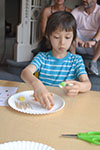 Local Children “Make” Nanodiamond Molecules at the Orpheum Courtesy of MechSE Professor Lili Cai
Local Children “Make” Nanodiamond Molecules at the Orpheum Courtesy of MechSE Professor Lili Cai
July 1, 2019
While making a “molecule” with toothpicks and gummy bears might just seem like a fun (and tasty?) pastime on a Saturday afternoon, the children participating in the activity at Champaign’s Orpheum Children’s Science Museum on June 29th were actually learning a bit about nanotechnology—to be specific—about nanodiamonds. The activity, presented by MechSE Assistant Professor Lili Cai, was related to one of her research areas: using a flame-based process to manufacture advanced nanomaterials. Cai is submitting an NSF Career grant proposal in January 2020, so in preparation, she has been implementing various research-related outreach activities that will fulfill NSF’s outreach component. Plus, in addition to the June 29th nanodiamond activity, on July 11th, she’ll be presenting an activity to high school students participating in one of Illinois’ Worldwide Youth in Science and Engineering (WYSE) summer camps. their research at a final symposium on Thursday, June 27th.
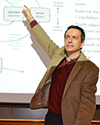 Via ENGINE, a Group of Illinois Educators Promote Using Playful Pedagogies to Engage Students
Via ENGINE, a Group of Illinois Educators Promote Using Playful Pedagogies to Engage Students
April 10, 2019
While Illinois students receive a good education and become highly sought after once they graduate, a group of Illinois faculty and educators believe faculty can do an even better job of engaging students. So a multidisciplinary team of educators with similar goals of improving education are collaborating in a new program called ENGINE: ENGagment In eNgineering Education, whose focus is for not just engineering faculty but all Illinois faculty to move beyond traditional teaching methods to explore a number of engaging new pedagogical strategies. A key objective, along with engaging students, is to share their passion for playful learning with other educators by developing resources then assessing the impact of these new teaching pedagogies to share with other faculty, both on campus and beyond.
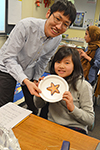 Paper2Tree Plants Trees, Sows Seeds Regarding Potential Careers in Engineering
Paper2Tree Plants Trees, Sows Seeds Regarding Potential Careers in Engineering
November 28, 2018
On Thursday, November 15th, a number of community-minded Mechanical Science and Engineering (MechSE) Professors participated in Mattia Gazzola’s Paper2Tree project, some for the second year in a row. The goal of the project is to enable these faculty to give back to the community in a couple of ways. First, as the Paper2Tree name implies, the professors hoped to make amends for the number of trees used up when publishing by having crews from two partners, the Urbana and Champaign Park Districts, on hand to plant two trees. The event also allowed these educators to give back to the community by sharing what they’re passionate about— teaching and research. But instead of working with today’s college students, they were interacting with tomorrow’s—fourth and fifth graders at Martin Luther King Elementary School in Urbana and fourth graders at Booker T. Washington STEM Academy (BTW) in Champaign.
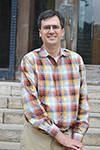 New Math Department Chair Faces Challenges: Fostering Community, Math Pipeline Retention, and Making Space
New Math Department Chair Faces Challenges: Fostering Community, Math Pipeline Retention, and Making Space
October 10, 2018
In his 17th year at Illinois, first as a Professor, then as Interim Chair, and now the new Chair of Illinois’ Mathematics Department since August of 2018, Jeremy Tyson is pretty familiar with both his department’s achievements as well as the challenges it faces. As with most newly installed Heads, he has big plans for down the road. But before addressing areas that could use improvement, he first takes stock of the department’s strengths. For instance, he’s proud of the faculty’s work to date, and lauds their instructional expertise. “I am really impressed with all of my colleagues and the efforts that they put into their teaching and into their mentoring of students,” he shares. “There's a lot of good things going on in this department already.”
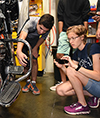 MechSE’s Leon Liebenberg, SIIP Team Use Play-in-Learning Elements to Engage Students, Foster Learning
MechSE’s Leon Liebenberg, SIIP Team Use Play-in-Learning Elements to Engage Students, Foster Learning
September 19, 2018
We’ve all seen toddlers learn about shapes by trying to place a round object into a toy’s square hole, and vice versa. We’ve also seen children learn basic structural engineering principles by building a tall tower of blocks or Legos with insufficient structural support, only to have it crash to the floor. If small children can learn through play, couldn’t much older students, such as undergraduates in Illinois Engineering courses? Leon Liebenberg, a MechSE Professor, and a team of colleagues who are part of his “Play-in-Learning: Cognition, Emotion, and Playful Pedagogy” SIIP proposal all seem to think so. However, Liebenberg reports, “Not everyone is convinced that play belongs in engineering…Some people are cynical or suspicious about the prospective benefits of play in engineering.”
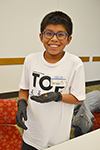 MechSE’s Joe Muskin Enlightens Local Youngsters About 3D Printing During Champaign Public Library Event
MechSE’s Joe Muskin Enlightens Local Youngsters About 3D Printing During Champaign Public Library Event
August 17, 2018
Does learning about STEM have to stop just because it’s summer vacation? A number of local youth (and their moms) say, “No!” So on July 25, 20 teens (and preteens) showed up at the Champaign Public Library (CPL) for 3D Pringing 101 to learn about, then experiment with, Stereolithographic 3D printing. Courtesy of Mechanical Science and Engineering’s Joe Muskin, the participants first learned a bit about the technology: they explored the equipment that's used, and learned how and why 3D printing works, including learning about the light spectrum. But even more fun was actually doing the printing itself; plus, they left the CPL armed with a couple of 3D printed objects they could whip out as proof when boasting about the activity to friends and family.
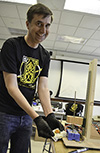 MechSE Outreach Guru Joe Muskin Exposes Teachers, Students of All Ages to STEM Education
MechSE Outreach Guru Joe Muskin Exposes Teachers, Students of All Ages to STEM Education
February 15, 2018
If you make the rounds of campus outreach very often, you will soon discover that one of the constants in the STEM-education-outreach universe is Joe Muskin. Education Coordinator for Mechanical Science and Engineering (MechSE), Muskin is an outstanding ambassador, both for his department and for the University. A tireless, creative teacher, he’s come up with innovative ways to communicate the material he’s teaching for the countless STEM education activities he’s been involved in. From teachers, to current Illinois students, to high school students, to elementary (and even pre-school) students, he’s broadened the knowledge of those he’s worked with about specific areas of engineering as well as STEM outreach. Regarding long-term impacts, he’s helped to pique participants’ interest in engineering and STEM education/outreach and has helped to recruit students into engineering, STEM, and to Illinois.
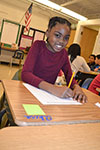 Christine Shenouda Studies Impact of Gender Stereotype Threat on Girls' Performance and Interest in Math
Christine Shenouda Studies Impact of Gender Stereotype Threat on Girls' Performance and Interest in Math
January 22, 2018
“I’m a girl, so I’m not very good at math.”
This gender stereotype is a common misconception that's pervasive in today's society. According to Christine Shenouda, in her Ph.D. dissertation entitled, Effects of Gender Stereotypes on Children’s Beliefs, Interests, and Performance in STEM Fields, this gender stereotype can have a devastating effect on girls when they’re reminded of it just before taking a math test. This is called gender stereotype threat. But while this stereotype—girls aren’t good at math—isn’t true, girls who have always done well in math—even those whose favorite subject is math—can still fall prey to its insidious influence.
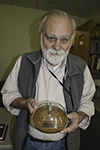 Jont Allen’s ECE 298 JA Course Reinforces Engineering Math Fundamentals While Surveying the History of Mathematics
Jont Allen’s ECE 298 JA Course Reinforces Engineering Math Fundamentals While Surveying the History of Mathematics
December 11, 2017
How well do AP students do on Illinois’ engineering math courses? To answer that question, about 12–15 years ago, a joint group of Illinois math and engineering professors studied the issue. While there is a strong correlation between AP scores of incoming students and how well they do in subsequent engineering math courses — students who get 5’s typically get A’s, 4’s get B’s, etc. — the study also discovered a great deal of variance and overlap between scores: though most students follow the norms, some end up getting A’s while others get D’s. Jont Allen, a professor in the Electrical and Computer Engineering (ECE) Department at Illinois, sees this enormous variability as a problem, so he set out to correct it. He created his own class, ECE 298 JA (his initials), to refresh incoming students in engineering fundamentals while teaching them the history of mathematics.
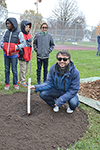 Mattia Gazzola’s Paper2Tree: A 3-Step Program to Give Back to Your Community: Publish a Paper ➜ Plant a Tree ➜ and Perform a School Outreach
Mattia Gazzola’s Paper2Tree: A 3-Step Program to Give Back to Your Community: Publish a Paper ➜ Plant a Tree ➜ and Perform a School Outreach
December 1, 2017
While appreciating the beauty of nature on his 20-minute jaunt from his home in west Urbana to campus every day, Mechanical Science & Engineering (MechSE) Assistant Professor Mattia Gazzola decided that just gazing at trees and being refreshed in his soul wasn’t enough. He felt he needed to counteract one of the negative effects of his job—publishing papers that, over the life of his career would, in all probability, take the lives of a number of trees. So he came up with Paper2Tree, a practical way for those in academia to not just take, but to give back by planting real trees to replace the ones destroyed while practicing their profession.
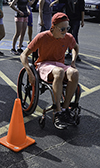 Summer Camps Expose Students to Engineering, College Life at Illinois
Summer Camps Expose Students to Engineering, College Life at Illinois
May 17, 2017
High school (even middle school) students looking for something fun to do once school is out need look no further than the numerous Engineering camps being offered at Illinois this summer. Most emphasize a specific engineering discipline, such as mechanical or materials engineering, while a few introduce the students to several disciplines. Some are for girls only; others are co-ed. Some are designed with specific age groups in mind, such as younger students or older ones who are closer to graduation and grappling with choosing their careers. However, despite their differences, they’re all alike in that they use fun demos, presentations, and hands-on activities to expose participants to engineering, and they give students a taste of what college life at Illinois is like.
FULL STORY
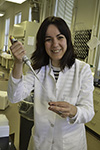 Leal's Career Grant: Research in Soft Materials, GLAM-Mid Camp for Girls, Workshop for Incarcerated Adults
Leal's Career Grant: Research in Soft Materials, GLAM-Mid Camp for Girls, Workshop for Incarcerated Adults
April 24, 2017
Cecelia Leal, an Assistant Professor in Materials Science and Engineering (MatSE), was recently awarded a 5-year National Science Foundation Grant called, “CAREER: Nanostructured Soft Substrates for Responsive Bioactive Coatings,” to study key fundamental properties of biocompatible lipid materials. Because Career grants also require researchers to do an educational outreach component, in addition to the graduate students she’ll be training and mentoring, Leal will be doing a new summer camp for middle school girls and a workshop for incarcerated individuals as part of the Education Justice Project.
FULL STORY
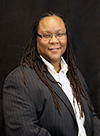 “Double Bind” Study Examines Obstacles Women of Color Face in Engineering
“Double Bind” Study Examines Obstacles Women of Color Face in Engineering
April 10, 2017
“You don’t want diversity just for the sake of diversity, don’t want them just for the sake of having them in the room. You want them for their perspective.” – Kelly Cross
Kelly Cross and several colleagues have begun a three-year study funded by the National Science Foundation to examine the experiences of women of color in engineering. Aptly named “The Double Bind of Race and Gender: A Look into the Experiences of Women of Color in Engineering,” the study Cross is conducting, along with Jenny Amos, Kathryn Clancy, Princess Imoukhuede, and Ruby Mendenhall, is looking at how women of color are doubly disadvantaged. They not only have to overcome historical gender inequities inherent in engineering, but also face the many challenges racial minorities encounter.
FULL STORY
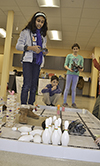 Wai-Tat Fu's Lab Partners with STEAM Studio To Make STEM, Spatial Reasoning Fun
Wai-Tat Fu's Lab Partners with STEAM Studio To Make STEM, Spatial Reasoning Fun
February 21, 2017
Hundreds of local adults and children converged on Altgeld Hall on Saturday, January 28th for Math Carnival: Gathering for Gardner. As they participated in the numerous puzzles, games, riddles, magic tricks, and other hands-on activities, they discovered that math is more than just figures and formulas.According to Melinda Lanius, a math Ph.D. student who, along with Assistant Professor Philipp Hieronymi, organized this year’s event, “Math is play!” So numerous volunteers from Illinois’ Department of Mathematics, Illinois Geometry Lab, and Association for Women in Mathematics spent the afternoon showing members of the community that play can indeed be math—and that it’s fun.
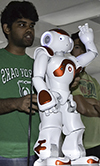 LaViers' RAD Lab Uses Robots/Dance to Study Movement, Provide Automation
LaViers' RAD Lab Uses Robots/Dance to Study Movement, Provide Automation
September 8, 2016
Surrounded by a crowd of laughing, cheering GAMES campers, NAO, an adorable little white and red robot, strutted its stuff, doing the moves the girls had choreographed and which it had been programmed to do. Then, like a chorus line, the team of high schoolers who had developed the routine lined up behind NAO and performed it along with the robot, amid gales of laughter.
 Rosado Continues to Improve Engineering Camps, Grow the STEM Pipeline to Illinois
Rosado Continues to Improve Engineering Camps, Grow the STEM Pipeline to Illinois
July 27, 2016
Sahid Rosado is a STEM outreach force to be reckoned with on the University of Illinois campus. After starting out as just an instructor for an Environmental Engineering G.A.M.E.S. camp session a few years ago, she is now the Outreach Coordinator for the College of Engineering and is in the process of not just improving but revolutionizing Illinois’ Engineering camps via the addition of middle school students as she seeks to grow the STEM pipeline to the University.
FULL STORY
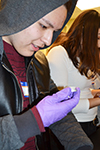 Akono Exposes Intrinsic High Students to the Mechanical Properties of Materials
Akono Exposes Intrinsic High Students to the Mechanical Properties of Materials
March 8, 2016
“How are we going to fuel our civilization in the next decades, especially knowing that we’re kind of running out of fossil reserves? It really boils down to having a fundamental understanding of the mechanical properties of materials.” – Ange-Therese Akono
Ange-Therese Akono, an Assistant Professor in Civil and Environmental Engineering, is passionate about building innovative, strong, durable buildings. That’s why her research involves understanding the mechanical properties of materials used to construct them. Akono is also passionate about passing on her enthusiasm for materials to the next generation, particularly underserved students. So on January 18, 2016, Akono and eight of her graduate and undergraduate students hosted a Structural Mechanics Workshop for 28 juniors and seniors from Chicago’s Intrinsic High School.
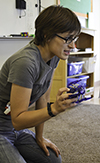 Suarez & Josek Use Insects & Robots to Teach Bioinspiration at STEAM Studio
Suarez & Josek Use Insects & Robots to Teach Bioinspiration at STEAM Studio
October 14, 2015
Taking a short break from their entomology research, Illinois Professor Andy Suarez and Ph.D. student Tanya Josek visited Next Generation School’s STEAM Studio, an after-school program that incorporates art into its STEM activities (Science, Technology, Engineering, ART, and Math). There they taught the students about bioinspiration— how biology can inspire engineering. The two incorporated a variety of hands-on activities guaranteed to engage the youngsters, teaching them about a couple of their favorite subjects: insects and insect-inspired robots.
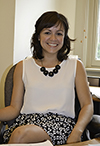 Rosado's Summer 2015 Camps Expose Young People to Engineering...and Illinois
Rosado's Summer 2015 Camps Expose Young People to Engineering...and Illinois
July 1, 2015
Sahid Rosado never dreamed when she signed on to teach an Environmental Engineering G.A.M.E.S. camp session a few years ago that she would end up where she is today—the reigning Queen of Illinois’ Engineering camps. As Outreach Coordinator for the College of Engineering, Rosado is ultimately responsible for 356 campers this summer—and she loves it.
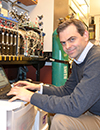 Burke Hopes to Cure Disease, "Hook" Students, Via Molecule-Making Machine
Burke Hopes to Cure Disease, "Hook" Students, Via Molecule-Making Machine
May 21, 2015
Marty Burke’s life-long dream was to become a doctor. Then one day, while chatting with a 22-year-old patient with cystic fibrosis whom he was helping to care for, he had an epiphany:
“We had this big conversation about her disease,” recalls Burke, “and I was telling her—because I had just learned about it—down to the molecular level, exactly what was wrong with her. And she said to me, ‘If you know exactly what’s wrong with me, why can’t you fix it?’ It was one of those totally life-changing conversations.”
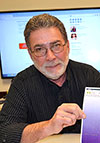 Gulyash, MechSE Machine Shop Solve Problems, Save Money…and Recruit
Gulyash, MechSE Machine Shop Solve Problems, Save Money…and Recruit
January 20, 2015
“What I have is a lifetime of solving problems by building anything and everything that’s been given to me.” – Clifford Gulyash
Clifford Gulyash, who heads up MechSE’s Machine Shop, doesn’t have an engineering degree. “What I do have is a basic understanding of how to make things,” he modestly explains. And he’s been making things since he was a six-year-old.
He shares an anecdote about his early proclivity for making things: “I started building as soon as I could pick up a hammer, and when I was five or six, I built my first go-cart, put a sail on it, and ended up getting into trouble going down the street. That’s a true story.”
FULL STORY
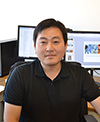 SungWoo Nam Creates Virtual Lab, Promotes Undergraduate Research
SungWoo Nam Creates Virtual Lab, Promotes Undergraduate Research
November 19, 2014
SungWoo Nam, an Assistant Professor in Mechanical Science and Engineering, appreciates the little things—the really little things—like on the nanoscale or the atomic level. However, when it comes to STEM education, he likes to work with students across the entire spectrum: graduate students, undergraduates, and even high school students. But his passion is exposing a sometimes overlooked group—college sophomores—to the wonders and the rewards of research, like his own research on nanoscale devices and materials, particularly graphene.
FULL STORY
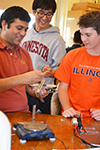 MechSE's Gaurav Bahl Promotes Outreach and Undergrad Research
MechSE's Gaurav Bahl Promotes Outreach and Undergrad Research
October 14, 2014
While MechSE Assistant Professor Gaurav Bahl is passionate about his research—opto-mechanics —he also believes university folk should get outside the four walls of their labs and impact the community. Plus, he's passionate about mentoring students, especially undergrads. So when he recently shared his expertise with some seniors at Uni High, he invited a couple of his students to tag along to share what they know and to experience outreach for themselves.
FULL STORY
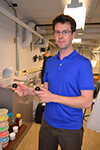 MechSE's Ewoldt Brings Rheology Down to a Level Learners of All Ages Can Grasp
MechSE's Ewoldt Brings Rheology Down to a Level Learners of All Ages Can Grasp
October 6, 2014
"If you really understand something, you can explain it to somebody else in a simple enough way to bring it down to their level, wherever that level might be." – Randy Ewoldt
And what Assistant Professor Randy Ewoldt of Illinois' Department of Mechanical Science and Engineering understands really well is fluid mechanics, particularly rheology. Bringing it down to a level most folks could understand, he defines it as: "the study of how things squish and deform when you push on them."
FULL STORY
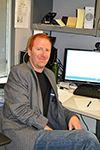 ECE's Daniel Wasserman Does "Whatever It Takes to Get Students to Learn"
ECE's Daniel Wasserman Does "Whatever It Takes to Get Students to Learn"
September 25, 2014
Assistant Professor Daniel Wasserman of Illinois' Department of Electrical and Computer Engineering (ECE) has never met a STEM education challenge he hasn't liked. While he enjoys working with Illinois engineering students (whom he says "are, of course, top, top students, and they're fantastic"), for a change of pace—and maybe a challenge—he likes to work with non-engineering college students, high school students, even grade-schoolers.
FULL STORY
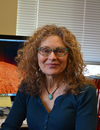 Popcorn Anyone? Cox's Advanced Visualization Lab Makes Science Data As Much Fun as the Movies
Popcorn Anyone? Cox's Advanced Visualization Lab Makes Science Data As Much Fun as the Movies
March 31, 2014
"At my heart and soul, I am really a graphic information designer, and that's primarily what I do—it's like being an engineer of information, only visually putting it out there." Donna Cox, Advanced Visualization Lab
There's an old saying, "A picture is worth a thousand words." However, comparing a picture to the visualizations that Donna Cox, the Director of the Advanced Visualization Lab, and her team produce is like comparing Alexander Graham Bell's original invention to an i-phone: while they might perform the same basic function, the latter, with its bells and whistles, is a whole lot more fun. But while one picture can tell a story, Cox's multi-sensory, 3-D, high-def motion picture experiences present the essence of copious amounts of technical data in an unforgettable, yet totally accurate, manner. While entertaining, these visualizations are highly useful to help scientists and decision-makers understand large data sets, as well as for both formal and informal teaching and learning.
FULL STORY
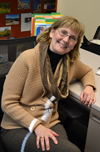 Center to Study the Effects of Toxins on Children, Then Educate the Public
Center to Study the Effects of Toxins on Children, Then Educate the Public
March 19, 2014
Like most folks these days, I make an effort to be green. However, I'm not a fanatic. But when I-STEM's director, Lizanne DeStefano, announced one day that, as a result of evaluating a new grant studying the effect of toxins on children, she had gone home and thrown out all of her Tupperware, this reporter's curiosity was piqued, and as a result of chatting with Susan Schantz about her project, I may mend my ways.
Co-funded by the National Institute of Environmental Health Sciences (NIEHS) and the Environmental Protection Agency (EPA), a 5-year, $7.6 million grant was recently awarded to Illinois' Children's Environmental Health Research Center. The project, "Novel Methods to Assess the Effects of Chemicals on Child Development," is studying the effects of phthalates and BPA on children.
FULL STORY
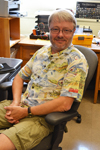 Mats Selen—Changing the Way Physics is Taught
Mats Selen—Changing the Way Physics is Taught
October 8, 2013
"Well I have to confess, I was always in the closet about teaching. I did all my research, but I secretly always loved teaching as much as I did research, probably more…so suddenly, if they could be the same things, what could be better?" – Mats Selen, Physics Professor
Mats Selen loves teaching physics, and he's not ashamed to admit it. After 20 years doing particle physics research, which he found to be both exciting and rewarding, when a successful experiment of his ended, he figured, "This might not be a bad time to switch what I am doing. So I thought to turn over a new leaf and come out of the closet and be a real-life teacher all the way around."
FULL STORY
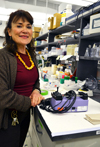 Martha Gillette's Favorite Dish? Interdisciplinary Research
Martha Gillette's Favorite Dish? Interdisciplinary Research
February 5, 2013
Martha Gillette has always been a maverick. For years, she has been a pioneer in interdisciplinary research—comfortably rubbing shoulders with chemists and engineers and, for a biologist, thinking outside the box.
Gillette calls herself a neuroscientist and biologist; in many of the collaborative projects in which she's been involved, such as the NSF-funded EBICS (Emergent Behavior of Integrated Cellular Systems) project, she's the "token biologist." However, based on her current research—emerging technologies for studying neurons—which uses engineering approaches to study neuro-development, she appears to be veering over into neuroengineering...
FULL STORY
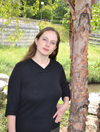 Nano-CEMMS' Carrie Kouadio Finds Teaching Nanotechnology Rewarding
Nano-CEMMS' Carrie Kouadio Finds Teaching Nanotechnology Rewarding
November 6, 2012
The Nano-CEMMS education program seems to have a pattern of offering top-notch educators stimulating science programs as bait, getting them hooked, then reeling them in. For example, the story of how Carrie Kouadio, an integral part of the Center for Nanoscale Chemical-Electrical-Mechanical Manufacturing Systems (Nano-CEMMS) education team ended up there is similar to those of several other members of the team: She was a science teacher who came to Nano-CEMMS to participate in teacher development to improve her skills and liked it so much that she stayed.
FULL STORY
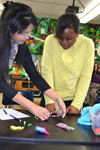 Myong, BioE Undergrads Expose Middle Schoolers to DNA/Cell Measurement
Myong, BioE Undergrads Expose Middle Schoolers to DNA/Cell Measurement
October 31, 2012
On Wednesday afternoons, a number of Illinois bioengineering undergrads can be found at Jefferson Middle School teaching seventh and eighth graders about science. The brain child of Bioengineering professor Sua Myong, this year-long, after-school outreach program funded by the Center for the Physics of Living Cells meets once a week to expose students to techniques used to measure things in cell biology.
FULL STORY
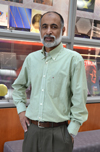 The Face of Nanotechnology at Illinois, CNST Promotes Interdisciplinary Collaboration
The Face of Nanotechnology at Illinois, CNST Promotes Interdisciplinary Collaboration
September 14, 2012
Illinois' Center for Nanoscale Science and Technology (CNST) works to provide training and to foster collaboration in nanotechnology at the intersection of engineering and biology. Why should engineers need to learn about biology? According to Irfan Ahmad, Executive Director of CNST, the national academies have identified the 21st century as the century of biology.
FULL STORY
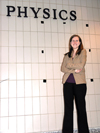 STEM Pipeline Alive and Well as Science Olympiad Impacts
STEM Pipeline Alive and Well as Science Olympiad Impacts
Former Contestant's STEM Career Choice
May 25, 2011
GET YOUNGSTERS HOOKED ON STEM when they're young, and when they're old, they'll choose STEM careers! Theoretically, that's how the STEM (science, engineering, technology and/or mathematics) pipeline is supposed to work, and Dr. Jennifer Docktor's journey along the pipeline is a perfect example. She began her voyage by getting involved in Science Olympiad at the age of 12 and credits her years in the science competition as playing a big part in her decision to enter the field of physics education.
STORY
 Robots and Real-World Problems:
Robots and Real-World Problems:
Michael Loui Tackles Engineering Education
October 24, 2011
Building robots and designing machines that solve real-world problems—it doesn't sound like the work of college freshmen, but professors in the College of Engineering at the University of Illinois have found that first-year engineering students are up to the challenge. Problem-based learning is a teaching method that gives students a specific problem to solve and leaves it up to them to come up with the solution. Engineering faculty have been using problem-based learning, or as engineers call it, design laboratory, for years. They have seen the benefits of the technique first-hand: it promotes problem-solving skills, develops creative skills, increases student retention, and promotes students' confidence in the subject area.
STORY
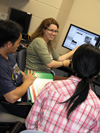 Amos's Atomic Microscope Gives Students Close-Up Look at Cells
Amos's Atomic Microscope Gives Students Close-Up Look at Cells
August 26, 2011
A few adventurous young bioengineers are taking cell research to a whole new level—the atomic level. University of Illinois bioengineering students now have access to a new tool for looking at cells called an Atomic Force Microscope (AFM). In March, the Roy J. Carver Charitable Trust provided the $290,000 machine, in the form of a grant, to the university and to bioengineering lecturer Jennifer Amos. Amos will lead a new class this fall called “The Bioreactor Lab” that will focus on teaching students about the use Atomic Force Microscopy in bioengineering.
STORY
 Chancellor's Fellow Anne Baranger to Study evaluation methods for STEM departments
Chancellor's Fellow Anne Baranger to Study evaluation methods for STEM departments
September 2, 2009
Dr. Anne Baranger, Associate Professor in Chemistry, has recently been named an I-STEM Chancellors Fellow for fiscal year 2010. Her mission is to develop a method to evaluate teaching and instruction in STEM departments and to establish a campus STEM education task force.
STORY
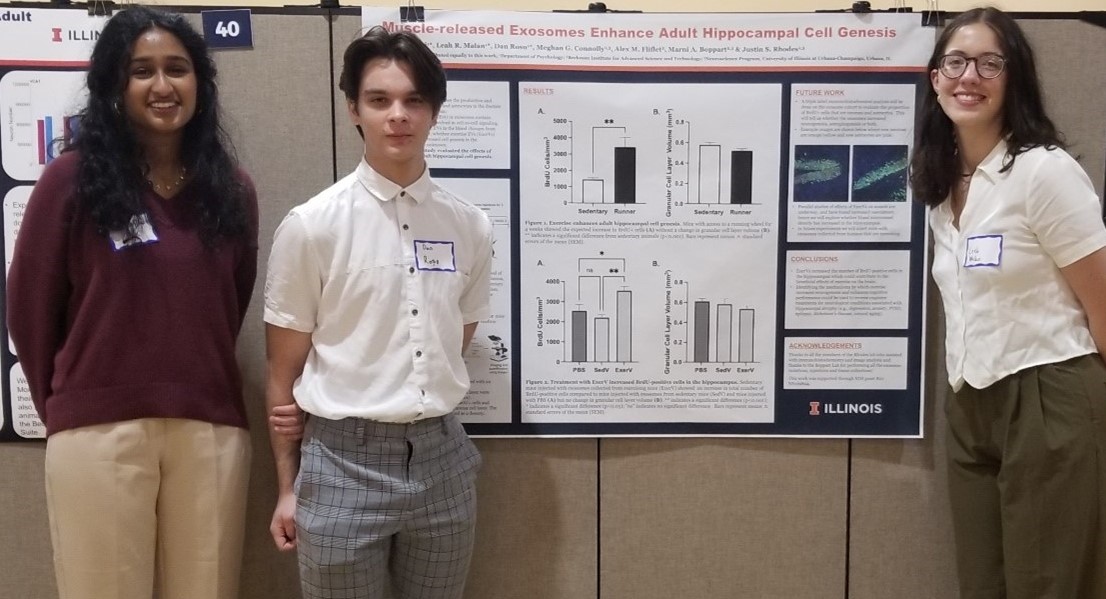
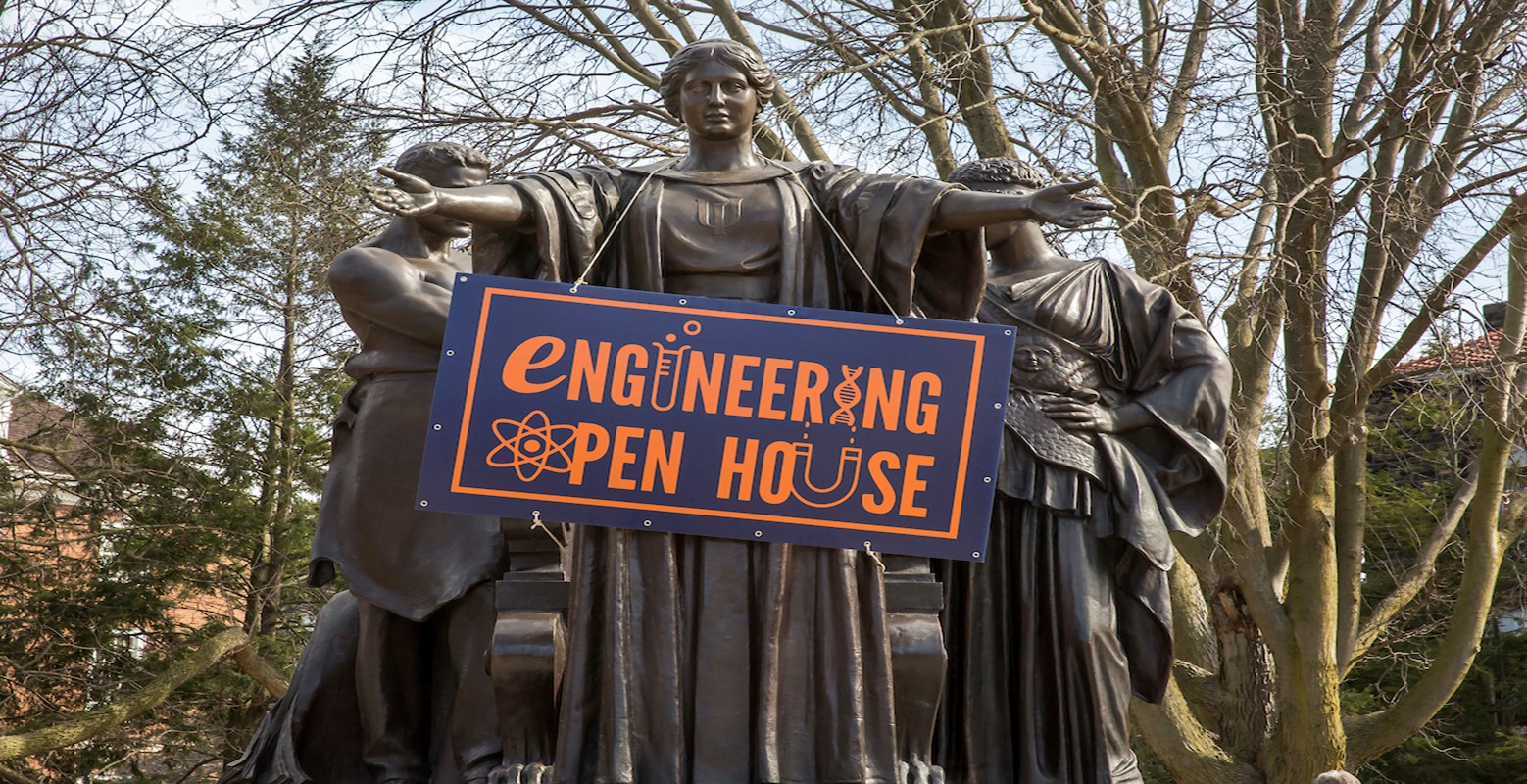
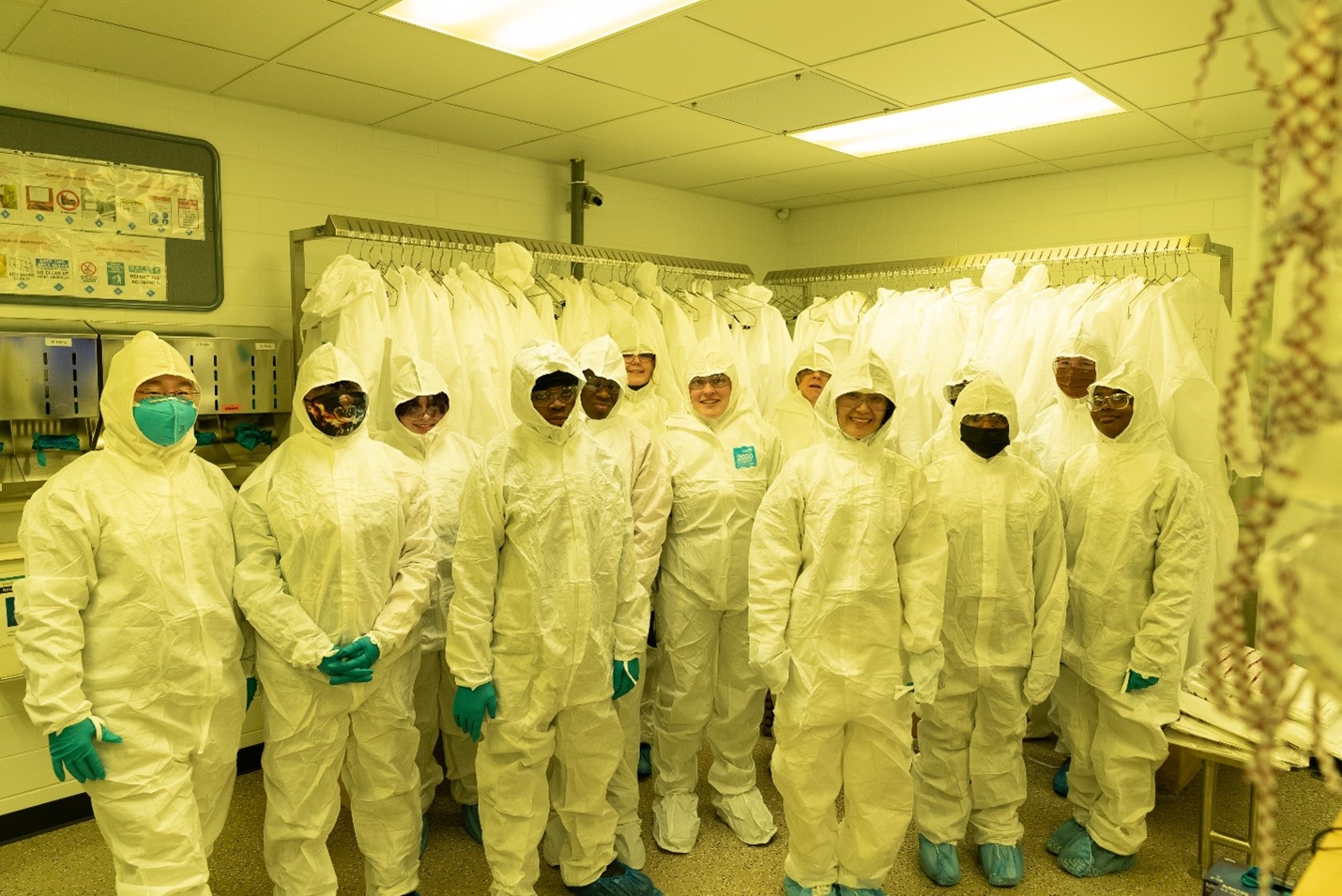
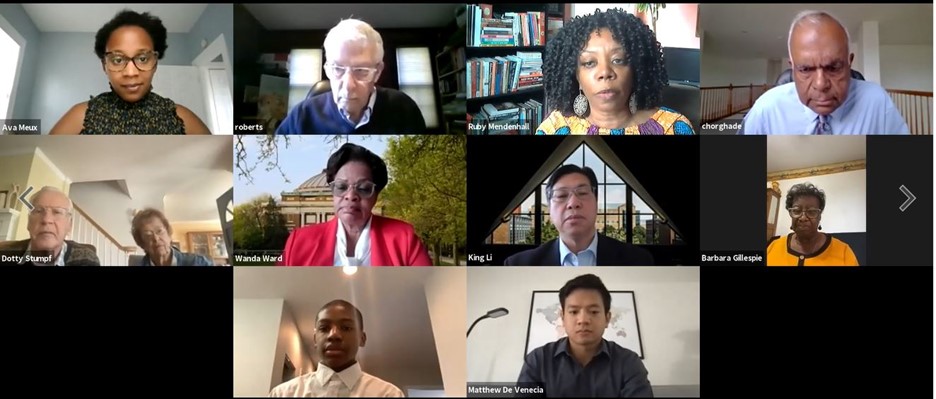
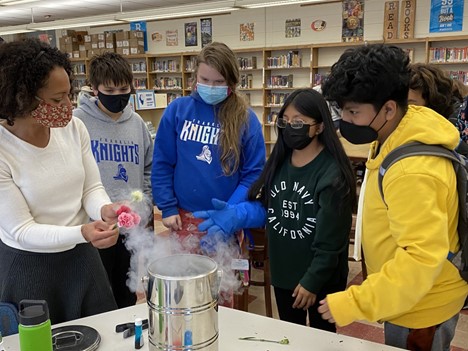
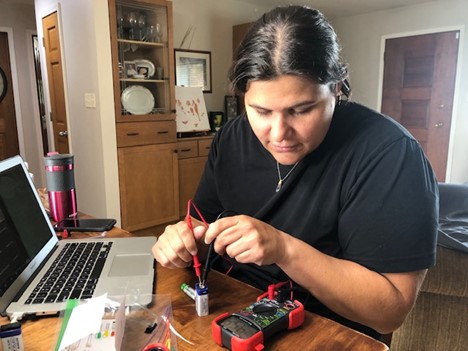
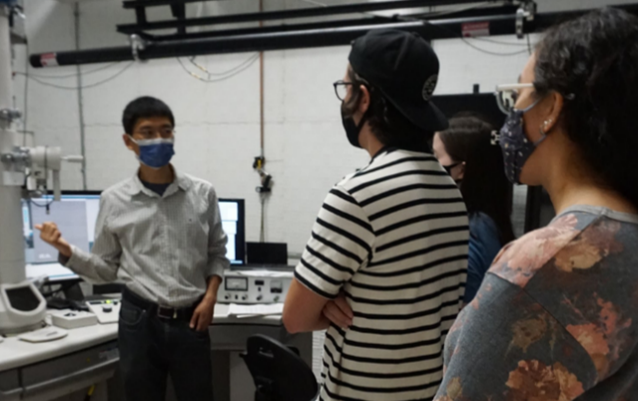
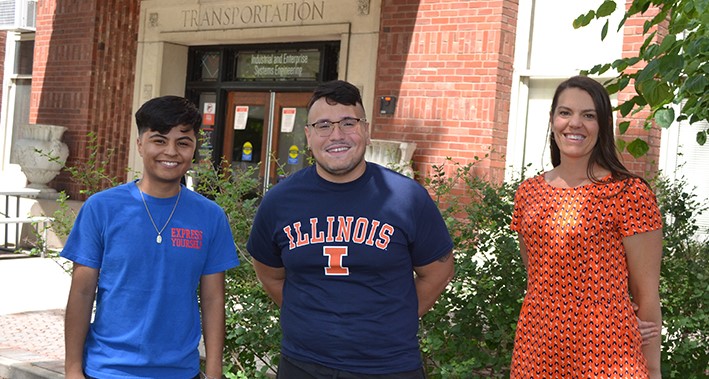
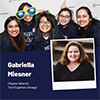

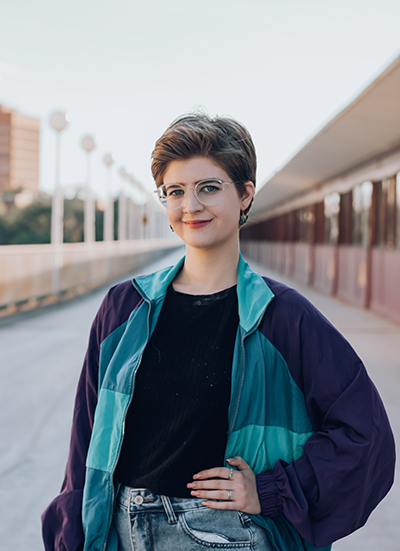
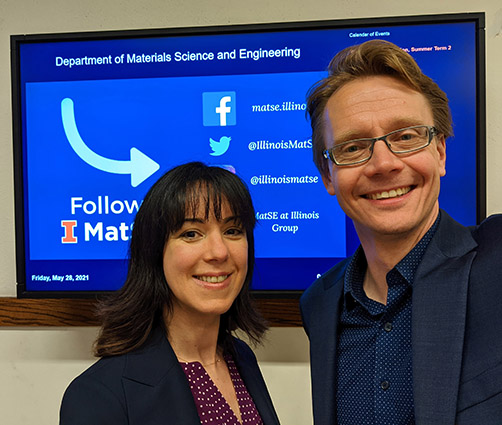
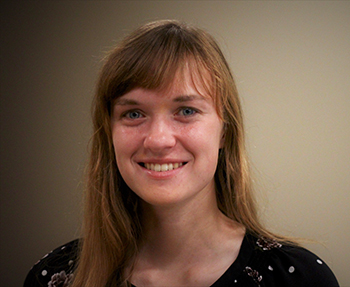
.jpg)
